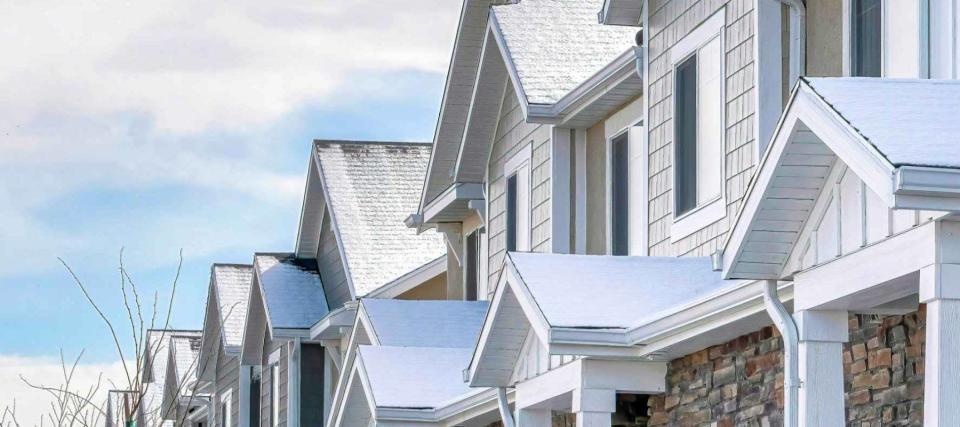Homeowners say no thanks to refinancing, despite threat of higher mortgage rates

Though mortgage rates remain historically low — far below the levels from the months just before the pandemic — demand for mortgage refinances is falling.
Refi applications have dropped and are down sharply from a year ago, according to a new survey from the country’s largest mortgage trade association.
Recent increases in rates may have spooked homeowners. But with the Federal Reserve fixing to raise interest rates multiple times in 2022, the lenders warn that mortgage borrowers may not have much more time to snag a cheap refinance rate.
Refinance activity slides again

Overall mortgage applications declined 4% in the week ending Dec. 10, led by a 6.4% dive in refinance activity, the Mortgage Bankers Association reported on Wednesday. Compared to the same time last year, refi demand was down by a stunning 41%.
“Fewer homeowners have a strong incentive to refinance at current rates,” says Joel Kan, the MBA’s forecasting chief.
The trade group’s weekly survey has the average for a 30-year fixed-rate mortgage holding for a second week at 3.30% — up from 2.97% in early August.
Even so, the rates on home loans remain much cheaper than they were before the pandemic broke. At Christmas 2019, the 30-year average was a stiff 3.99%.
Some homeowners may be putting off refinancing because they’re wagering lower rates will return, but that could be a risky strategy. The MBA predicts 30-year mortgage rates will hit an average 4% by the end of 2022.
Record-low mortgage rates aren’t likely to return

“If rates trend higher as MBA is forecasting, the window of opportunity to refinance will continue to get smaller,” Kan said last week.
It’s likely millions of potential refinancers still haven’t made their move. A recent Zillow study found 78% of homeowners never traded in their loans to score one of the ultra-low rates available during the pandemic’s first year. Among those who did refi, almost half saved $300 or more a month.
Mortgage rates hit all-time lows during the COVID surge last winter. Now, the delta variant is filling hospitals again while the omicron threat emerges. But with most Americans vaccinated and many getting booster shots, no one is expecting the kind of economic disruption that would send mortgage rates tumbling back.
“In order for mortgage rates to fall to the levels seen in early 2021, there will need to be a lot of talk about the ‘R’ word: recession,” says Corey Burr, senior vice president at TTR Sotheby’s International Realty in Washington, D.C.
Instead, the spotlight has been on the “I” word: inflation. Prices shot up in November at the fastest pace since 1982. Against that backdrop, the Fed on Wednesday signaled that it expects to hike interest rates three times next year.
How to secure the lowest refinance rate

America’s central bank also said it plans to more quickly wind down its COVID-era campaign of buying up Treasury bonds and mortgage-backed securities to stimulate the economy. Those purchases have helped hold down mortgage rates.
For the time being, it’s still relatively easy to find 30-year refi mortgages under 3%, and 15-year refinances at 2% or even lower.
Just keep in mind that a lender may not automatically offer the lowest interest rate available. That usually requires a little bit of effort on from the borrower.
A good first step is to check your credit score, which you can easily do for free. The lowest mortgage rates tend to go to borrowers with the highest scores.
When you’re ready to move forward with a refinance, check mortgage rates from at least five lenders to find the best loan available in your area and for a borrower with your credit profile.
If a refi isn’t possible or something you want to do, there are other ways to cut the cost of homeownership. Once it’s time to renew your homeowners insurance, always get quotes from multiple insurers to make sure you’re not overpaying.
This article provides information only and should not be construed as advice. It is provided without warranty of any kind.




